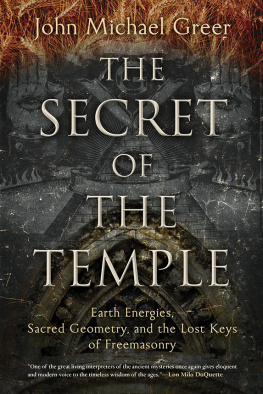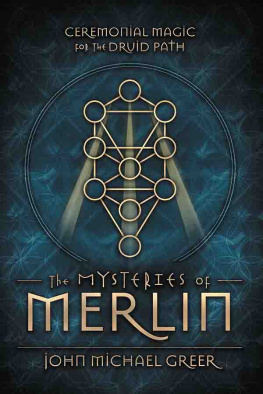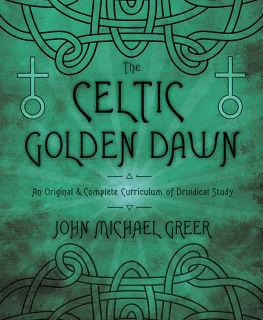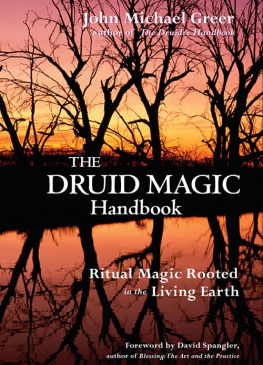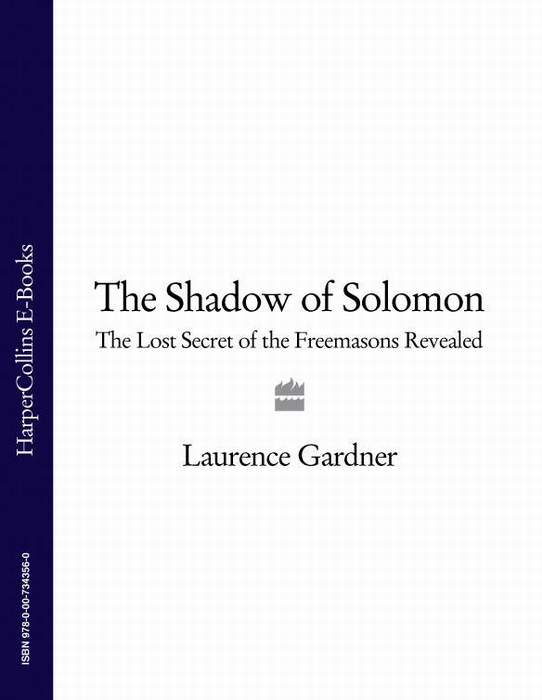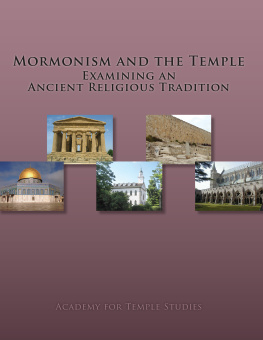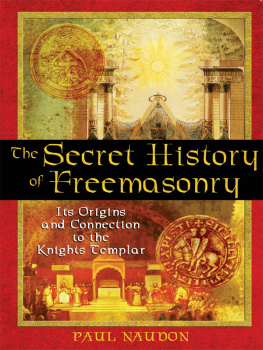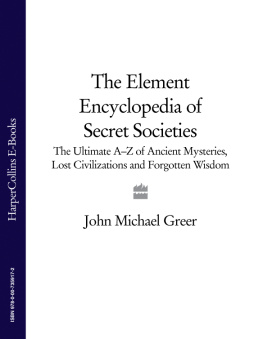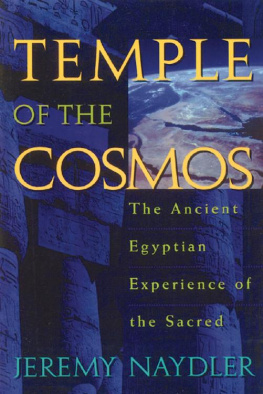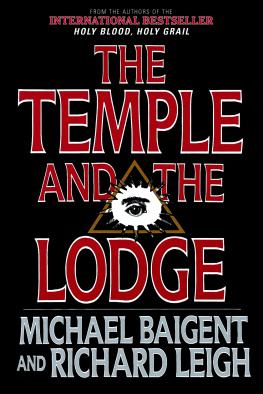John Michael Greer (Western Maryland) has been a student of occult traditions and the unexplained for more than thirty years. A Freemason, a student of geomancy and sacred geometry, and a widely read blogger, he is also the author of numerous books, including Monsters , The New Encyclopedia of the Occult, and Secrets of the Lost Symbol . Greer has contributed articles to Renaissance Magazine , Golden Dawn Journal , Mezlim , New Moon Rising , Gnosis , and Alexandria .

Llewellyn Publications
Woodbury, Minnesota
Copyright Information
The Secret of the Temple: Earth Energies, Sacred Geometry, and the Lost Keys of Freemasonry 2016 by John Michael Greer.
All rights reserved. No part of this book may be used or reproduced in any matter whatsoever, including Internet usage, without written permission from Llewellyn Publications, except in the form of brief quotations embodied in critical articles and reviews.
As the purchaser of this e-book, you are granted the non-exclusive, non-transferable right to access and read the text of this e-book on screen. The text may not be otherwise reproduced, transmitted, downloaded, or recorded on any other storage device in any form or by any means.
Any unauthorized usage of the text without express written permission of the publisher is a violation of the authors copyright and is illegal and punishable by law.
First e-book edition 2016
E-book ISBN: 9780738750552
Book design by Rebecca Zins
Cover design by Kevin R. Brown
Cover credits:
iStockphoto.com/17364031/_ultraforma_
iStockphoto.com/68079155/valentinrussanov
iStockphoto.com/77292865/Lava4images
iStockphoto.com/15509209/Man_Half-tube
Editing by Aaron Lawrence
Interior credits:
Freemason symbol, square and compass, iStockphoto.com/45709994/tschitscherin
Temple front with columns, iStockphoto.com/57977690/Askold Romanov
Illustrations by the author and Llewellyns art department
Llewellyn Publications is an imprint of Llewellyn Worldwide Ltd.
Library of Congress Cataloging-in-Publication Data
Names: Greer, John Michael, author.
Title: The secret of the temple : earth energies, sacred geometry, and the
lost keys of freemasonry / John Michael Greer.
Description: Woodbury, Minnesota : Llewellyn Publications, 2016. | Includes
bibliographical references and index.
Identifiers: LCCN 2016034706 (print) | LCCN 2016038336 (ebook) | ISBN
9780738748603 | ISBN 9780738750552
Subjects: LCSH: Freemasons. | Geomancy. | Earth (Planet)Religious aspects.
Classification: LCC HS395 .G8194 2016 (print) | LCC HS395 (ebook) | DDC
133.3/33dc23
LC record available at https://lccn.loc.gov/2016034706
Llewellyn Publications does not participate in, endorse, or have any authority or responsibility concerning private business arrangements between our authors and the public.
Any Internet references contained in this work are current at publication time, but the publisher cannot guarantee that a specific reference will continue or be maintained. Please refer to the publishers website for links to current author websites.
Llewellyn Publications
Llewellyn Worldwide Ltd.
2143 Wooddale Drive
Woodbury, MN 55125
www.llewellyn.com
Manufactured in the United States of America
Contents

: THE RIDDLE
: The Lost Word
: The Temple of Solomon
: The Temple Tradition
: The Changing of the Gods
: The Secret of the Grail
: THE TECHNOLOGY
: The Temple Technology
: Location and Orientation
: Sacred Geometry
: Structure and Substance
: Rite and Ceremony
: THE LEGACY
: The Ancient Secret
: The Knights of the Temple
: The Coming of the Waste Land
: The Recovery of the Grail
Introduction
This book has been many years in the making and had no single starting point. Over the course of decades of omnivorous reading about the folklore, mythology, and religious customs of many lands, I happened to notice unexpected similarities between traditions, far removed in space and time, that related to religious architecture on the one hand and agricultural fertility on the other. A long time passed, and much more research had to take place, before I began to suspect that those similarities fit into a single pattern, and even more time and study was required before I guessed what that pattern might once have been.
There have been plenty of attempts over the years to fit all the worlds mythologies and folk traditions into some single theory. From solar mythology through the archetypes of the collective unconscious to ancient astronauts, theres no shortage of Procrustean beds into which, with enough stretching and lopping, any myth, legend, or tradition can be force-fitted. Thus its probably necessary to point out that this book doesnt attempt any similar surgery. If anything has been learned from the last century and a half of comparative mythology, its that myths, legends, and folk customs talk about many different things in many different ways, and no one scheme of interpretation makes sense of them all.
People tell stories and establish customs, in other words, for many different reasons. The hypothesis at the heart of this book is that certain people in a number of Old World societies told stories and established customs that, among other things, had to do with an archaic technology, centered on temples of certain specific kinds and kept secret by its possessors, that had beneficial effects on agriculture in the areas immediately around those temples. To judge by the traces of this technology in myth and folklore, it evolved very gradually in prehistoric times, flourished in many of the literate urban societies of the ancient world, and went out of use for a variety of complex historical reasons in the late Middle Ages or not long thereafter. While the actual mechanism behind the lost technology cant yet be determined with any certainty from the surviving traces and traditions, theres no reason to assume that the forces that underlie it are unknown to todays scientists, and nothing in those traces and traditions suggests that anything involved in that technology violates the laws of nature as presently known.
Its only fair to caution my readers that the investigation chronicled in this book is frankly speculative in places. That is unavoidable. Few tasks in any branch of scholarship are as difficult as trying to tease out, from fragmentary records, a secret that people in ancient times did their level best to conceal. I have followed a slender thread through the labyrinth that leads to the lost technology chronicled here, and that thread can be snapped readily enough by those who arent interested in finding out where it leads. I can only hope that enough of my readers will find the quest as intriguing as I have, and so will follow it to its end.
For reasons that will become clear in the pages that follow, much of the research that led to this book was made possible by my membership in Freemasonry. I would therefore like to thank the officers and brethren of Doric Lodge #92, F&AM, Seattle, WA, where I was made a Mason in 2001; the officers and brethren of Queen City Lodge #131, AF&AM, Cumberland, MD, where Im currently a member; and the officers and brethren of all the other grand lodges, lodges, and appendant and concordant bodies in the family of Freemasonry who have welcomed me as a member or visiting brother and very often given me clues and insights of critical importance to the adventure chronicled in these pages. My gratitude remains with all.

